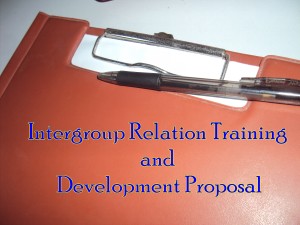History of the Web
Tim-Berner’s Lee, a computer specialist from the European Particle Physics Laboratory (CERN) in 1989, initially conceived the web. As he said, there was “a need for a collaborative knowledge-sharing tool” to support scientific or any kind of advancement in an international context. He and his partner Robert Cailliau created a prototype web and released it to the Internet community for testing and comments. Since then it has grown into the web we know today under the guidance of the World Wide Web Consortium (W3C) that is a volunteer organization based at the Massachusetts Institute of Technology (MIT) with responsibility for developing and maintaining common standards.
Perhaps the single most important technological development in the history of the web itself, was the development of graphical browsers in the early 90s. Beginning with the NCSA’s Mosaic and its evolution into Netscape Navigator and Microsoft’s Internet Explorer, these programs allowed users to browse the resources on the web in an extremely user friendly environment. This made the web a “fun” place marked the beginning of the true web revolution.
The web is a complex, international cross platform, cross language, cross cultural mesh of servers, clients, users, databases, and quite a few artificial intelligence all taking, working, searching, viewing, accessing, downloading, and who knows what else. As such, no one owns or controls the web. In fact, it is impossible to own or control by its very nature and design. In fact, it is not even an it. You can’t hold the web or make it tangible. Instead, you can think of the web not as a thing, but as a process, an action, ‘a medium of communication. This fact has profound implications on how you should think about designing web pages.
The web is not synonymous with the internet through some people may think so. Actually, the web is one way to utilize the infrastructure of the internet. In other words, the web is an application of the internet.
Differences between the web and paper
One of the first things most people will tell you as they explain the fundamentals of web design is that the web pages are not like paper pages. In these ways, it is true:
Static vs Dynamic. Paper is static. Once something is printed on paper, it doesn’t change. A web page, however, can chance at any moment. For this reason, it is essential to make sure that the information on you web page is current. Imagine getting last week’s newspaper on your doorstep. No one wants to read old news. They will skip over your site and go to another site that has been recently updated. Even if there is no new information present, it’s good to find something to change daily or weekly or even monthly, such as “tip of the day”, a list of “monthly activities/events”, or even a comic strip.
An international audience. The web is accessible from virtually anywhere in the world as compared to paper, and it is important to take into consideration that a portion of your audience will probably be from another country. (This, of course, doesn’t apply to local businesses and organizations that only target people within a specific region.) It you aim to reach people all over the world, English is the preferred language. The use of slang or colloquialisms should be minimized, and keep the language simple so people from other cultures, and those who read English as their second language can understand.
The Web becomes paper. One thing to consider in the web versus paper is that the web can become paper if a web page is printed out while it is much more difficult to input the contents of a paper page into the web.
Multimedia. Paper doesn’t really have multimedia. At most, it has images. The images on paper are usually very detailed and appear instantly. On the web, they usually carry less detail and the user has to wait for them to download before they can be viewed. Usually the text appears before the images. Even so, images put on the web enhance and define the written text messages, besides as mentioned before; images in the web over paper is that it can carry sound and video, provided that certain technologies exist on both the client and server side. It is important to make sure that multimedia carries nonessential information, as some or all of it may be inaccessible to a large portion of your audience.
